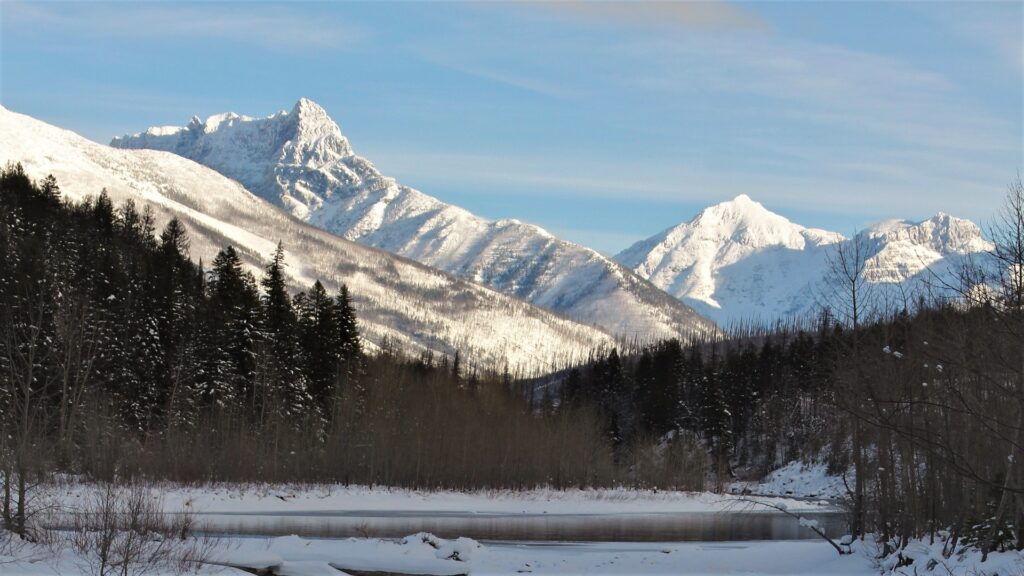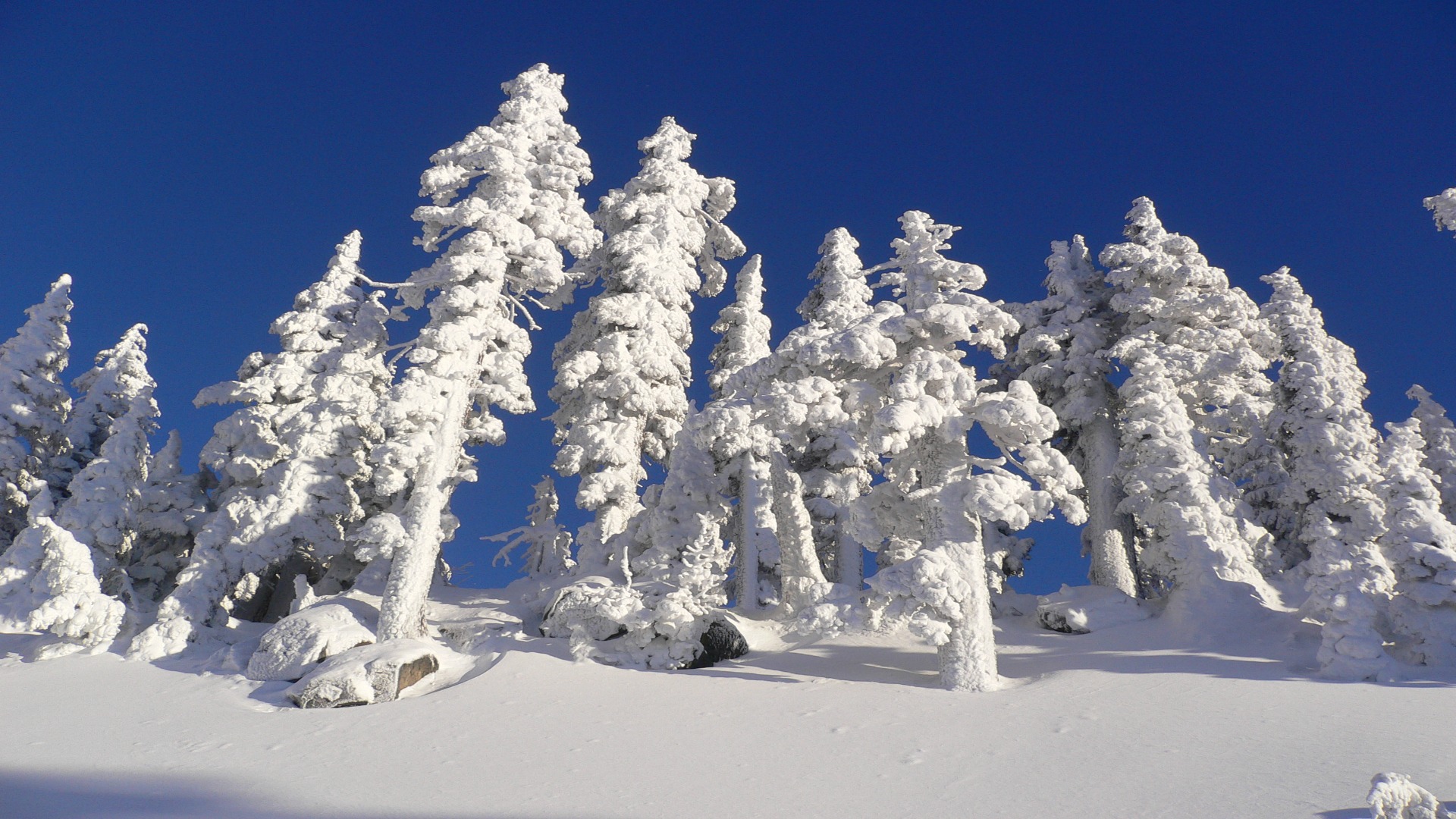When summer crowds disperse and snow blankets the landscape, America’s national parks transform into winter wonderlands, offering spectacular adventures for those willing to brave the cold. Winter in these natural treasures reveals a different side of their beauty: frozen waterfalls glisten in the sun, wildlife leaves tracks in fresh powder, and steam rises mysteriously from thermal features against snowy backdrops.
While many visitors reserve their national park trips for warmer months, winter explorers are rewarded with peaceful solitude, unique recreational opportunities, and breathtaking scenery that summer visitors never witness. From snowshoeing across pristine meadows to witnessing the ethereal beauty of ice-covered lakes, these parks offer extraordinary experiences for winter adventurers of all kinds.
Yellowstone National Park: A Geothermal Winter Paradise

Yellowstone National Park transforms into a magical winter landscape where billowing steam from geysers creates an otherworldly scene against the snow-covered terrain. The park’s famous geothermal features become even more dramatic in winter, as the stark contrast between the steaming hot springs and surrounding snow creates a photographer’s paradise.
Winter visitors can explore the park via guided snowmobile tours, cross-country ski excursions, or snow coach trips that venture into the park’s interior. Wildlife viewing reaches peak potential as bison, wolves, elk, and other animals become more visible against the white backdrop, often gathering near thermal areas for warmth in the freezing temperatures.
Grand Teton National Park: Dramatic Mountain Scenery

The jagged peaks of the Teton Range draped in winter white create one of the most dramatic mountain landscapes in America, making Grand Teton National Park a premier winter destination. The park offers over 20 miles of groomed cross-country ski trails ranging from beginner routes around Taggart Lake to challenging terrain in the high country.
Adventurous backcountry skiers and snowboarders can explore powder-filled slopes and valleys with proper avalanche training and equipment. Wildlife viewing opportunities abound as moose, bison, and elk congregate in the valley floor, while the reduced crowds mean greater chances of peaceful encounters with these magnificent creatures.
Rocky Mountain National Park: Alpine Adventures

Rocky Mountain National Park’s winter landscape offers breathtaking alpine experiences with over 415 square miles of mountains, forests, and tundra transformed by snow. Trail Ridge Road may close in winter, but Bear Lake Road remains accessible, providing entry to popular winter recreation areas where visitors can snowshoe or cross-country ski on both marked and unmarked trails.
The park’s winter ranger-led programs include guided snowshoe walks that offer fascinating insights into how plants and animals survive the harsh mountain winters. Hidden Valley, a former ski area within the park, remains popular for sledding and tubing, making it perfect for family winter adventures in a spectacular mountain setting.
Glacier National Park: Pristine Wilderness Experience

Glacier National Park in winter offers solitude and unspoiled wilderness that few visitors ever experience, with dramatically fewer crowds than its busy summer season. While many park roads close due to snow, the Apgar and Lake McDonald areas remain accessible and serve as gateways to winter adventures, including cross-country skiing, snowshoeing, and winter camping for the truly adventurous.
The peaceful winter atmosphere provides unparalleled opportunities to connect with nature, as the typical sounds of summer visitors are replaced by the crunch of snow underfoot and the occasional call of winter birds. Photography enthusiasts find endless inspiration in the park’s snow-covered peaks, frozen waterfalls, and ice-encrusted landscapes bathed in the soft winter light that photographers cherish.
Mount Rainier National Park: Paradise for Snow Lovers

Mount Rainier National Park receives an impressive average of 53 feet of snow annually, making it one of America’s snowiest accessible locations and a true paradise for winter enthusiasts. The aptly named Paradise area becomes a hub for snowshoeing, cross-country skiing, and the popular winter activity of snow camping, where adventurers can experience the mountain’s majesty under starlit winter skies.
Ranger-led snowshoe walks provide educational experiences about the park’s winter ecology and how plants and animals adapt to the extreme conditions. The park’s proximity to Seattle makes it an accessible winter destination, offering urban dwellers an easy escape into a pristine mountain wilderness covered in deep, powdery snow.
Olympic National Park: Diverse Winter Ecosystems

Olympic National Park offers an extraordinary diversity of winter experiences, from snow-covered mountains to temperate rainforests and wild coastlines, all in one destination. Hurricane Ridge, the park’s premier winter recreation area, provides opportunities for downhill skiing, snowboarding, cross-country skiing, snowshoeing, and sledding with breathtaking views across the Olympic Mountains.
The park’s unique temperate rainforests take on a mystical quality in winter, with moss-draped trees occasionally dusted with snow creating an enchanted forest atmosphere. Winter storms along the park’s 73 miles of wild coastline provide dramatic wave displays and the chance to beachcomb for treasures brought in by powerful winter tides, offering a completely different type of winter adventure than the snowy mountain experiences.
Bryce Canyon National Park: Snow-Dusted Hoodoos

Bryce Canyon National Park’s famous orange hoodoos dusted with snow create one of the most striking visual contrasts in the national park system, with the white snow accentuating the red-orange rock formations. The park’s high elevation (8,000-9,000 feet) ensures reliable snow cover, providing excellent opportunities for cross-country skiing and snowshoeing along the rim and among the hoodoos.
Ranger-led full moon snowshoe hikes offer a magical experience of seeing the moonlight illuminate the snow-covered hoodoos, creating an otherworldly landscape unlike anything else in America. The clear winter air and minimal light pollution make Bryce Canyon an exceptional destination for winter stargazing, with astronomy programs continuing throughout the winter months.
Grand Canyon National Park: Rare Snow Vistas

While not typically considered a winter destination, Grand Canyon National Park’s rare snow events transform this natural wonder into an even more spectacular sight that relatively few visitors ever witness. The South Rim remains open year-round and offers winter visitors the extraordinary experience of seeing the canyon’s depths highlighted by snow on the ridges and pinnacles, creating a depth and dimension that summer visitors never see.
Winter brings clearer air and improved visibility, allowing visitors to see farther across the vast canyon landscape than during the hazy summer months. The dramatic reduction in crowds means winter visitors can experience peaceful moments of solitude at normally busy viewpoints, creating opportunities for quiet contemplation and photography without the interruption of summer crowds.
Acadia National Park: Winter on the Atlantic Coast

Acadia National Park offers a distinctive East Coast winter experience where snow-covered mountains meet the frigid Atlantic Ocean, creating diverse recreational opportunities in a compact area. The park’s 45 miles of carriage roads, when snow-covered, transform into excellent routes for cross-country skiing and snowshoeing through forests and past historic stone bridges.
Winter visitors can experience the thrill of ice fishing on Eagle Lake and other park waters once they freeze solid enough for safe access. For the most adventurous winter visitors, the park offers opportunities for winter camping at Blackwoods Campground, providing a true wilderness experience on the rugged Maine coast during its most challenging season.
Crater Lake National Park: America’s Deepest Snowpack

Crater Lake National Park receives an average of 43 feet of snow annually, creating one of America’s deepest and most reliable snowpacks for winter recreation. The park’s famous caldera filled with stunningly blue water takes on a new dimension when surrounded by snow-covered slopes, creating a stark and beautiful contrast between the deep blue lake and pristine white snow.
Rangers lead free snowshoe walks on weekends and holidays from December through April, offering educational insights while traveling through forests bent and shaped by the tremendous snow load they bear each winter. The 33-mile Rim Drive, closed to vehicles in winter, becomes a challenging route for experienced cross-country skiers and snowshoers looking for spectacular views and a true wilderness experience.
Voyageurs National Park: Frozen Lakes and Northern Lights

Voyageurs National Park in northern Minnesota transforms in winter as its network of interconnected waterways freezes solid, creating a vast playground for winter adventures across frozen lakes and channels. The park maintains over 110 miles of snowmobile trails along with separate trails for cross-country skiing and snowshoeing, allowing visitors to explore remote areas that are difficult to access in summer.
Ice fishing becomes a popular activity as the park’s waters freeze, giving anglers access to walleye, northern pike, and other prized game fish through the ice. The park’s northern location and minimal light pollution create ideal conditions for viewing the aurora borealis (northern lights), adding a magical celestial display to the winter experience on clear, cold nights.
Essential Preparation for Winter Park Adventures

Winter adventures in national parks require thorough preparation and an understanding of the unique challenges cold weather presents in these remote environments. Visitors should check park websites or call visitor centers for current conditions, road closures, and avalanche forecasts before departing, as conditions can change rapidly in winter. Proper clothing is essential—dressing in moisture-wicking layers, carrying extra warm gear, and wearing appropriate footwear can mean the difference between an enjoyable experience and a dangerous situation.
Winter explorers should always carry emergency supplies, including extra food, water, navigation tools, first aid supplies, and communication devices, understanding that cell service is limited or nonexistent in many park areas. Most importantly, all winter visitors should share their itinerary with someone not in their party and have realistic expectations about their physical abilities in challenging winter conditions.
Conclusion

Winter in America’s national parks offers extraordinary experiences for those willing to prepare for and embrace the unique challenges of cold-weather exploration. The transformed landscapes, peaceful solitude, and special recreational opportunities provide memories that last a lifetime. While summer draws the crowds, winter reveals the soul of these magnificent natural treasures, rewarding adventurous visitors with experiences few will ever know.
Whether you’re seeking adrenaline-pumping snow sports, peaceful wilderness solitude, unique wildlife viewing, or simply the chance to see familiar landscapes transformed by winter’s touch, these parks offer winter adventures for every interest and ability level.

